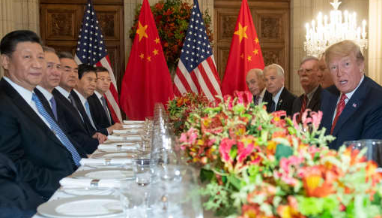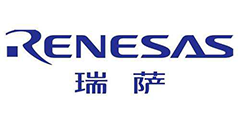- Ameya360 Component Supply Platform >
- Trade news >
- Trump will slap 10% tariffs on $200 billion in Chinese goods — and they will go to 25% at year-end
Trump will slap 10% tariffs on $200 billion in Chinese goods — and they will go to 25% at year-end
President Donald Trump will impose 10 percent tariffs on $200 billion worth of Chinese imports, and those duties will rise to 25 percent at the end of the year.
The action, announced by the Trump administration Monday, escalates a trade conflict between the world's two largest economies. China has already threatened to retaliate against new duties.
The White House removed about 300 goods from a previously proposed list of affected products, including smart watches, some chemicals, and other products such as bicycle helmets and high chairs.
Trump, in a statement, said that the tariffs would rise to 25 percent on Jan. 1, 2019, adding that "if China takes retaliatory action against our farmers or other industries, we will immediately pursue phase three, which is tariffs on approximately $267 billion of additional imports."
Trump has previously said that those additional duties are "ready to go on short notice if I want."
The action will only ratchet up tensions between Washington and Beijing. The president seeks a new trade agreement amid complaints about alleged theft of intellectual property by Chinese companies and concerns about the U.S. trade deficit with China. The two sides have failed to reach a deal to resolve the White House's concerns with China's trade practices despite a series of talks.
"We have been very clear about the type of changes that need to be made, and we have given China every opportunity to treat us more fairly," Trump said in the statement.
"But, so far, China has been unwilling to change its practices."
The president has defended his tariff moves, despite mounting criticism from Republican lawmakers and potential political damage. On Monday morning, he tweeted: "Tariffs have put the U.S. in a very strong bargaining position, with Billions of Dollars, and Jobs, flowing into our Country - and yet cost increases have thus far been almost unnoticeable. If countries will not make fair deals with us, they will be 'Tariffed!'"

In a statement on Monday, National Association of Manufacturers (NAM) President and CEO Jay Timmons said imposing the tariffs risked undoing the results that manufacturers have achieved in the past year because of tax and regulatory reforms.
"With every day that passes without progress on a rules-based, bilateral trade agreement with China, the potential grows for manufacturers and manufacturing workers to get hurt. No one wins in a trade war, and manufacturing workers are hopeful the administration's approach will quickly yield results," Timmons said, in the statement.
The White House has already levied tariffs on $50 billion worth of Chinese products. Beijing responded with measures targeting $50 billion on American goods, raising fears about damage to the American farm industry.
Some administration officials have pushed for additional talks with China as they try to ease tensions with the world's second-largest economy. But Trump contended last week that the U.S. was under "no pressure" to reach an agreement.
Earlier Monday, White House economic advisor Larry Kudlow said Trump "has not been satisfied with the talks with China on this."
China's Foreign Ministry has said the government would hit back if the U.S. moved forward with tariffs.
But Trump said he hopes the situation will be "resolved, in the end, by myself and President Xi [Jinping] of China, for whom I have great respect and affection."
Online messageinquiry

China's Xi is about to deliver a speech that could have major consequences for the trade war

US will hold off on raising China tariffs to 25% as Trump and Xi agree to a 90-day trade truce

Expect a photo op and a 'mock deal' at the Trump-Xi meeting — not a long-term truce, says economist
- Week of hot material
- Material in short supply seckilling
| model | brand | Quote |
|---|---|---|
| MC33074DR2G | onsemi | |
| TL431ACLPR | Texas Instruments | |
| CDZVT2R20B | ROHM Semiconductor | |
| BD71847AMWV-E2 | ROHM Semiconductor | |
| RB751G-40T2R | ROHM Semiconductor |
| model | brand | To snap up |
|---|---|---|
| IPZ40N04S5L4R8ATMA1 | Infineon Technologies | |
| BU33JA2MNVX-CTL | ROHM Semiconductor | |
| BP3621 | ROHM Semiconductor | |
| TPS63050YFFR | Texas Instruments | |
| ESR03EZPJ151 | ROHM Semiconductor | |
| STM32F429IGT6 | STMicroelectronics |
- Week of ranking
- Month ranking
Qr code of ameya360 official account
Identify TWO-DIMENSIONAL code, you can pay attention to


Please enter the verification code in the image below:






















